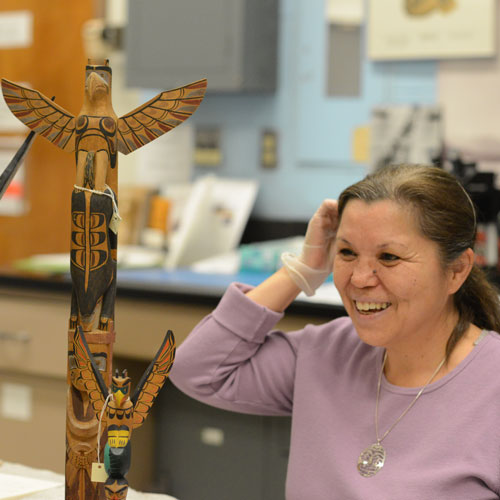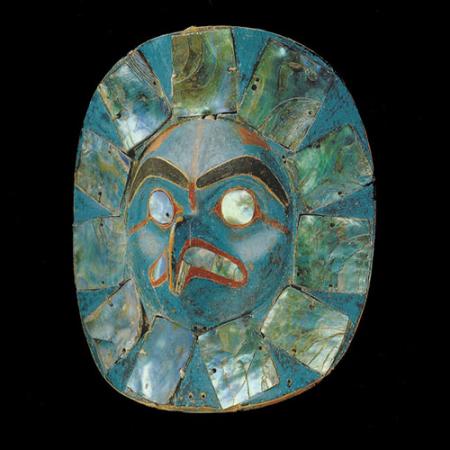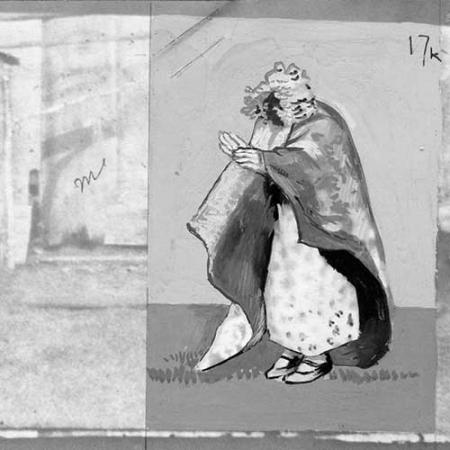The films and audio recordings are a significant treasure of the project to have that glimpse into 1930 in Fort Rupert. …They're a part of our collective history and belong to all of us as Kwakwa̱ka̱’wakw and we need to bring them back to life.
Tommy Child
Shaped by—and integrated with—active cultural knowledge by Kwag’uł contributors
Dr. Kathryn Bunn-Marcuse, curator of Northwest Native art and director of the Bill Holm Center for the Study of Northwest Native Art, is leading a collaborative project to reunite existing archival media—historical films, wax-cylinder audio recordings, images of material collections, and unpublished manuscripts and fieldnotes—from far-flung institutions and merge them into a new digital whole, shaped by and integrated with active cultural knowledge by Kwag’uł contributors.
The team of researchers includes Kwag’uł community members, some of whom are descended from Boas’ subjects and are undertaking their own independent work to digitize and preserve song recordings and to return the songs to use in their community.
Coreen Child, a key contributor on issues of dance and song, is the direct descendant of both Charlie and Bob Wilson, who appear in the films giving speeches and dancing. Kaleb Child works in aboriginal education in his community and for the province of B.C. He brings insight into the potential uses of these materials for community-centered education. As well, he is a teacher and practitioner of traditional Kwag’uł song and dance. Tommy Child has worked as the Lands and Resources manager for the Kwakiutl First Nation with a long history of research on Kwag’uł songs.
Ka̱ns Hiłile (Making it Right)–A Collaborative Reframing of Kwakiutl Film and Audio Recordings with Franz Boas, 1930 will be the first born-digital book published by University of Washington Press in their new initiative for a digital infrastructure for Indigenous studies scholarship and is expected to be released in 2020.

Support the Bill Holm Center
The work of the Bill Holm Center is made possible by the generous support of individuals and foundations passionate about fostering appreciation and understanding of Northwest Native art.


